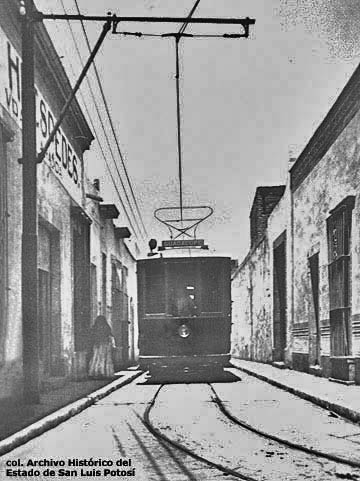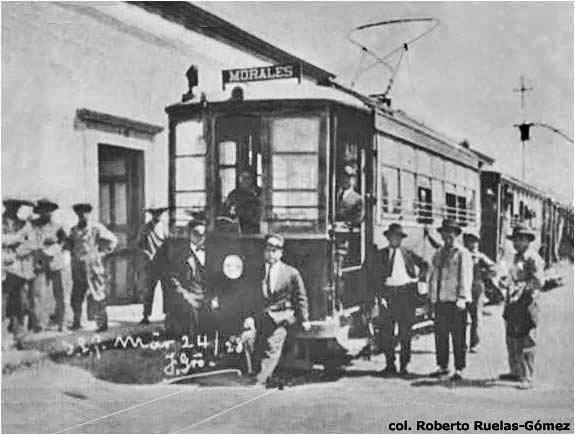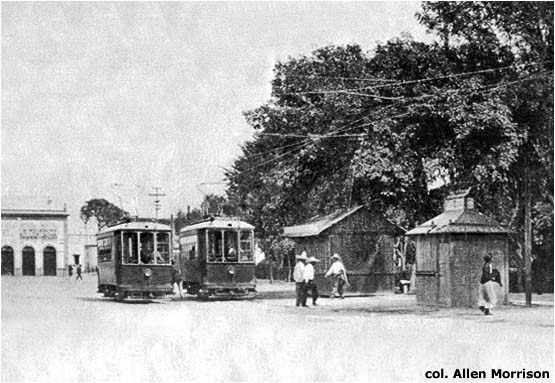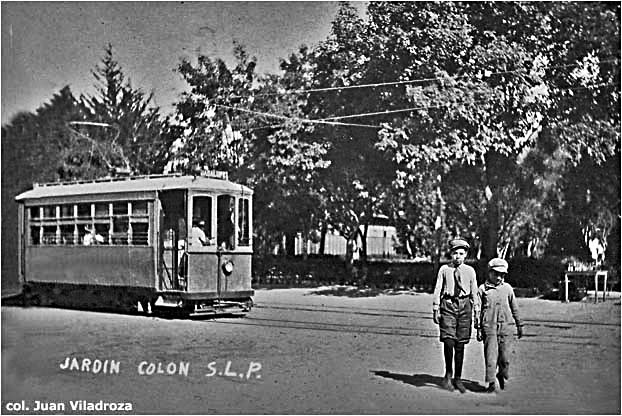San Luis Potosí BY Allen Morrison
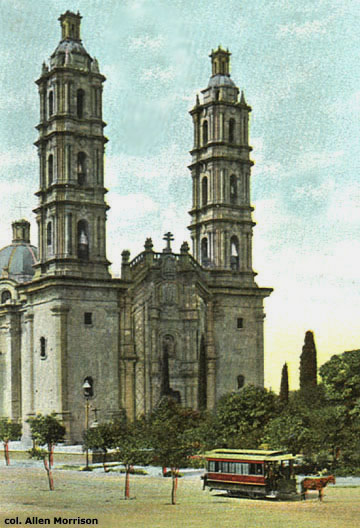
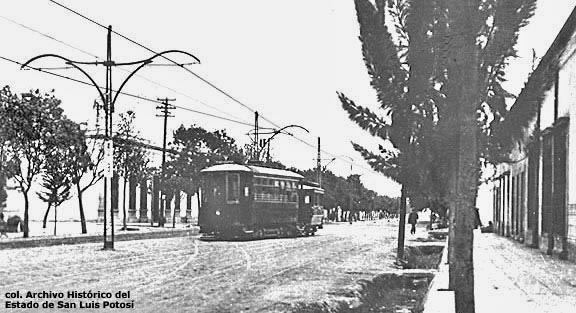
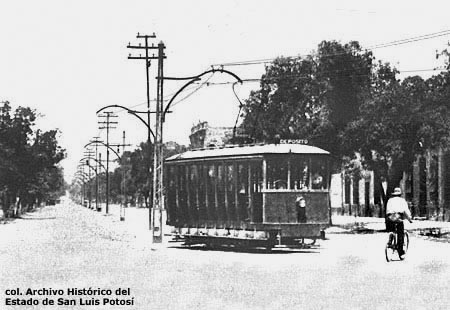
Car number 10 is collecting passengers at Jardín de Juan de Dios, which is located on Calle Obregón near Arriaga [see map] [col. AM]:
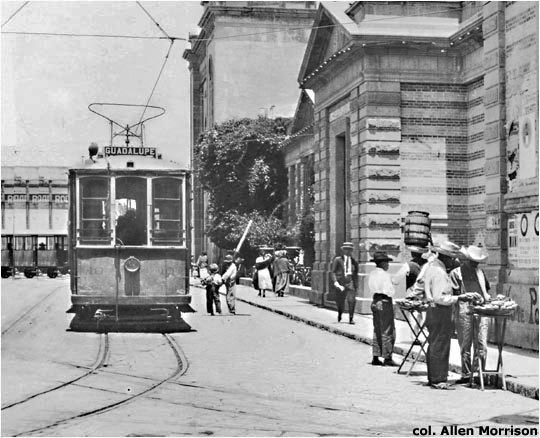
The tram in this wonderful postcard view, dated 24 March 1928, is pulling two open
trailers. For unknown reasons, postcards showing electric trams in San
Luis Potosí are extremely rare [col. Roberto
Ruelas-Gómez]:
Another fine postcard view shows the same tram + trailers crossing the Río [de] Santiago on the Morales line [see map]. The bridge was destroyed by a flood in 1933 [col. Roberto Ruelas-Gómez]: 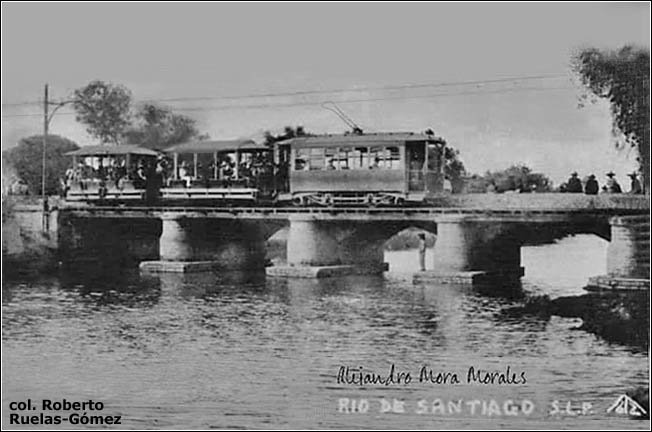 Location of the two cars below is uncertain, but a former resident guesses the tram station in front of Tequisquiapan church [see map] [col. AM]:
The terminus of the Guadalupe line [see map] [col. Juan Viladrosa]:
Horsecars continued to be used as trailers behind the electric cars. Note inscription "Compañía de Tranvías de S.L.P., S.A. (Sociedad Anónima)" [col. Juan Viladrosa]: |
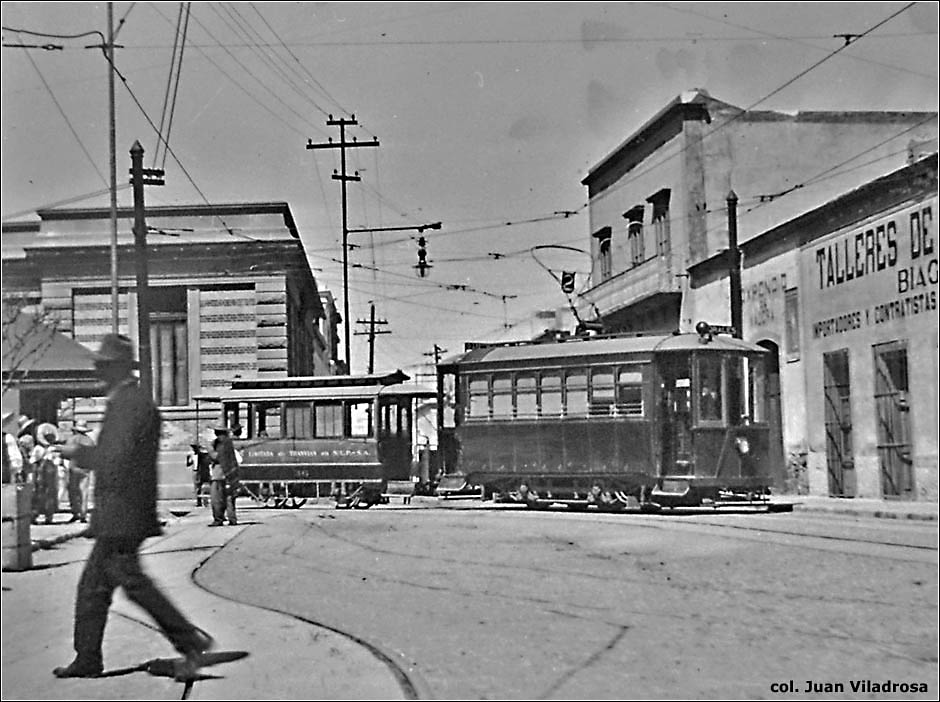
|
A festive scene in San Miguelito [see map] – but no one looks happy! Why are the men holding the wire? [col. Juan Viladrosa]: |
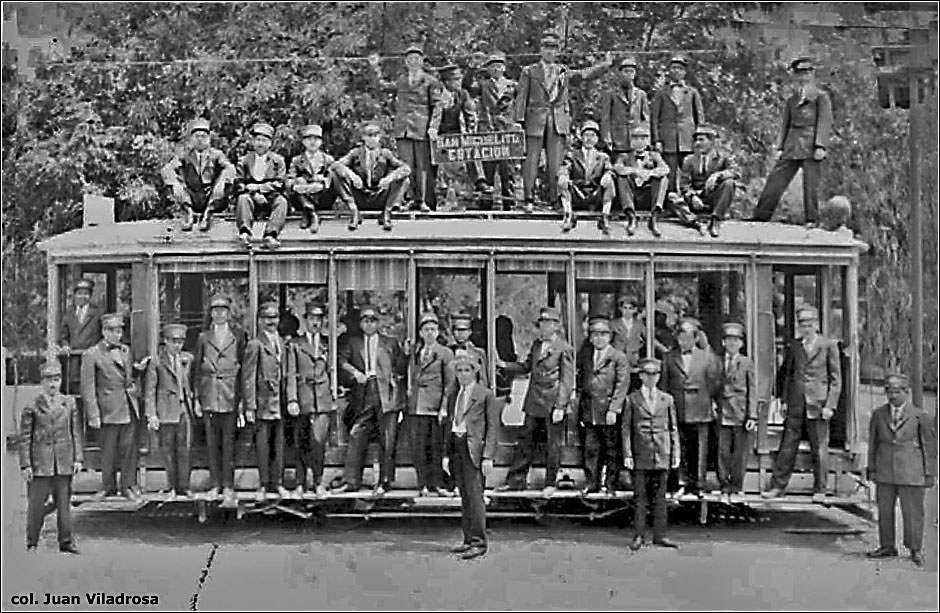
|
Very little information could be found about the development of the tramway system in San Luis Potosí. The Mexican government stopped publishing detailed tramway data in 1907 and tramway surveys published in the USA never mention this city at all. According to the Archivo Histórico del Estado de San Luis Potosí, the Compañía Limitada de Tranvías was liquidated on 5 October 1931 and the city's last tram ran on 7 April 1932. In 2000 Luis Antonio Castro Prieto, a former employee of the San Luis Potosí tramway company, published his memories in a booklet called Aquel San Luis de los Años Veinte (That San Luis of the 1920s). A chapter entitled "Los Tranvías de mi Ciudad", pp. 35-38, provides several interesting anecdotes, lists the routes and confirms the closing date. He mentions that the Compañía Limitada de Tranvías deteriorated after the death of its Danish director, Oscar Eriksen, in 1931. Following bankruptcy, the employees tried without success to form a cooperative to keep the tramway in operation. In San Luis Potosí state there was also a gasoline-powered tramway in Ciudad de Valles and there were animal-powered tramways in Cerritos, Guerrero, Jesus María, Matehuala, Santa María del Río and Villa de Reyes. The mule-drawn railway that transported workers around the mining region of Real de Catorce was later electrified. .......
....... INTRODUCTION & INDEX MAP
|
